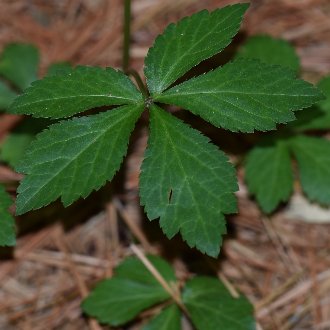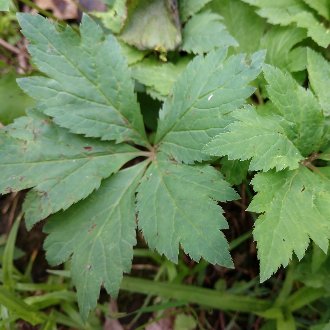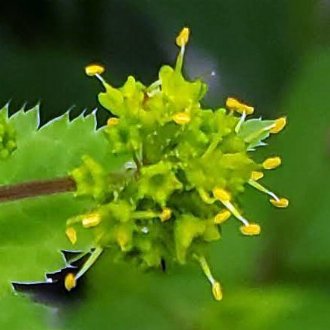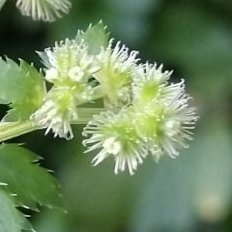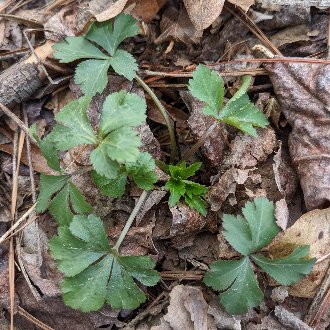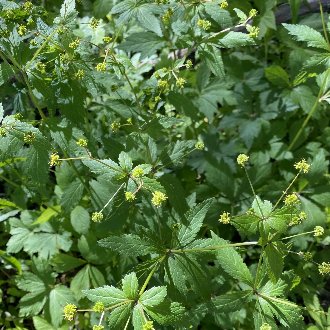Canadian Blacksnakeroot vs Clustered Blacksnakeroot
The various Sanicula sp. are notoriously hard to identify. These two can sometimes be distinguished by whether they have 5 true leaflets or just an appearance of such. They are more reliably distinguished by differences in flower color and structure. Both species are common in much of their range and can be found in a variety of habitats, with much overlap; S. odorata ranges slightly farther into sunnier, more disturbed habitats, whereas S. canadensis is, on average, found in shadier habitats with more organic matter in the soil, and is more tolerant of sandy and acidic soils.
Canadian Blacksnakeroot (Sanicula canadensis) | Clustered Blacksnakeroot (Sanicula odorata) |
A biennial of rich woodlands, native to eastern North America. | A biennial of rich, deciduous woodlands, favoring sites that have experienced some recent disturbance. |
Most leaves only have 3 leaflets, with the two basal ones deeply-cut, giving a 5-leaflet-like appearance at a glance, with two "fake leaflets" close to the base being smaller than other three. Leaf margins often look less jagged and more rounded. Photo © Blake Bringhurst, CC BY 4.0. | Most basal leaves have 5 actual leaflets, roughly similar in size and shape; plants only rarely have basal leaves with 3 leaflets, usually only when very young. Leaf margins often look more jagged. Photo © Nathan Rauh, Public Domain. |
Flowers are white, with white anthers. Flower clusters visually-dominated by bur-like structure at base of ovaries of the perfect flowers, reflecting the relatively few staminate flowers and their short pedicels. Photo © Niki Robertson, CC BY 4.0. | Flowers greenish-yellow, with bright yellow anthers. Bur-like structure is initially hidden inside a globe-shaped structure of the more showy staminate flowers, reflecting these flowers being more numerous and having longer pedicels. Photo © aarongunnar, CC BY 4.0. |
Styles are not usually noticeable, even when flower cluster is fresh. Photo © Nathan Rauh, Public Domain. | Long, recurved styles are much longer than the bristles on the fruit, and some are often still visible in older flower clusters. Photo © Étienne Lacroix-Carignan, Public Domain. |
Although it can occur in colonies, it is more likely to be solitary or only in small groups. More likely in shadier habitats with an abundance of organic matter, and more likely to be found on sandy and/or acidic soils. Photo © stephen, CC BY 4.0. | "Gregarious"; although it can occur as isolated individuals, it is often found in large colonies with many individuals, often forming a mass of vegetation. Tends to inhabit sunnier habitats that have experienced more disturbance and often have thicker ground-level vegetation. Photo © Jim Bowhay, Public Domain. |
References & External Resources
These short lists show only links helpful for ID. For a complete list of references and resources also covering other aspects of ecology, visit the links section of the full article on each plant, which is the first entry here.



